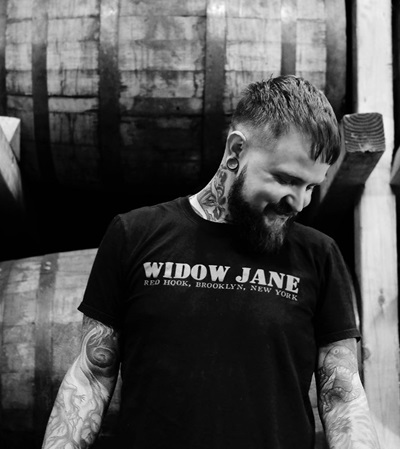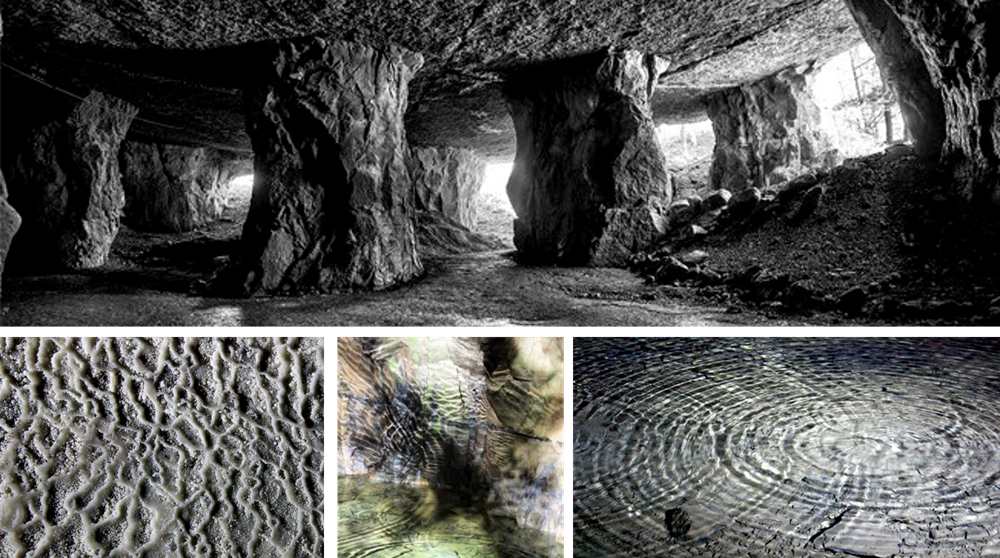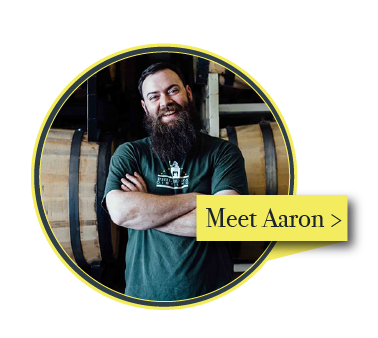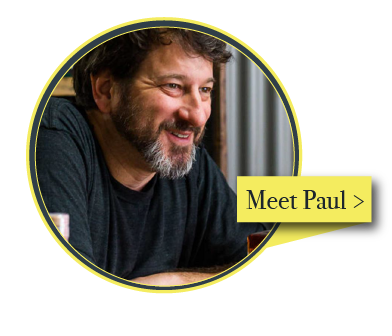What’s in the Water? A Conversation with Widow Jane’s Vince Oleson
Aug. 7, 2017
New Yorkers claim that local water is the not-so-secret ingredient to their city’s famous doughy bagels and perfectly foldable pizza slices. Vince Oleson believes it is also the key to another New York export: Widow Jane Bourbon.
Oleson is the master distiller at Widow Jane Distillery in Brooklyn’s Red Hook neighborhood. Founded in 2012 and originally part of a small-batch bean-to-bar chocolate operation, Widow Jane is now a standalone distillery with the mission of producing bourbons and whiskeys that are as unmistakably New York as pastrami on rye.
So what makes Oleson’s whiskeys authentically New York? That famous water is a start, but there’s more to it. We talked to Oleson about why we should all love his New York whiskey.

Breakthru: How did Widow Jane start?
Vince Oleson: Our focus as a company has always been on agriculture. It’s just a part of our DNA. In the beginning, we actually started as a chocolate factory. We worked with farms in the Dominican Republic to bring really high quality, raw, organic, pesticide-free cacao to Brooklyn, and then roast those beans and turn them into really great chocolate. At one point we decided that we wanted to shift over to distilling and create bold, rich bourbon. We followed the same inspiration and ethos that led us to start our chocolate company when we started distilling. Also, chocolate, like whiskey, is a fermented product, so it grew organically from there.
How is that agriculture focus reflected in Widow Jane?
We wanted to come out as a bold, rich bourbon brand, but we also wanted to take a lot of care with the agricultural products that we worked with, and because the lifeblood of bourbon is corn, we wanted to work on using some really interesting corn varietals, and really bring those unique, heritage, heirloom varietals into the conversation.
That side of our operation is still pretty young and is still in development. In the meantime we have our flagship bourbon, which we initially worked with a distillery out of Kentucky to source. We took this really high-quality single barrel bourbon that’s been aged for ten years and we blend it with our own mineral water, and that water is a big part of our story.
What’s so special about that water?
The water we use to proof our whiskey is from the Widow Jane Mine in upstate New York. This mine was originally excavated to make up the foundation for the Brooklyn Bridge, the Statue of Liberty and the Empire State Building. Even some of the Washington Monument was made from that cement that came from that mine. It has this very American history to it.
Once the mine was blasted out and excavated it was then left vacant and dormant for the past two hundred plus years. Over that time, rainwater has filtered through the limestone rock and picked up this soft, sweet richness as it comes through the rock. That hard mineral water bonds to some of the flavor molecules and esters that are created during the maturation process in the barrel, and it really makes for this soft, sweet, rich finish for our product.
What characteristic does that Widow Jane Mine water impart in the bourbon?
I know there's a lot of stories about water out there, and sometimes I roll my eyes because I've heard a few of them that are a little outlandish. However, I genuinely have to say that I go up to the Widow Jane Mine pretty regularly and I'll just take a handful of the water and drink it. It has this creaminess and silkiness to it that really comes through in that proofing process of the barrel. When we take the whiskey from barrel strength to bottle strength, 91 proof, it's a good amount of water that goes in there and yet it still maintains this rich, spicy, profile, but it has this silkiness that kind of melds everything together.

You briefly mentioned the corn that you’re using in some of your small-batch bourbons. Is that all from upstate New York as well?
Yeah, we started growing in a little town called Hurley, which is about 10 minutes from the Widow Jane mine itself.
The one we started with is called Wapsie Valley. From what we've researched, it's indigenous to Iowa, but it's grown in upstate New York. It looks like candy corn when it's shelled, and its got this sort of tangy sweetness to it.
We also use another corn called Bloody Butcher, which is blood red in color. That Bloody Butcher corn has this low-starch, high-protein content, which means we don't yield as much off of it, but it has this almost savory expression. From as much as we can tell, that corn's actually indigenous to the Appalachian Valley, which is the greater New York valley.
We deliberately started growing these two corn varietals side by side because corn's open-air pollinated and the two cross pollinated. We're calling it Baby Jane, and it's this really cool corn that is expressive of the sweet, savory balance that makes a truly unique bourbon, and so we're really excited to show these different corns, and what they can do to make different kinds of bourbon.
By using so many locally sourced ingredients, do you feel Widow Jane captures a sense of place and has New York terroir?
I embrace that 100 percent. It’s not so much something that we're aiming for, per se, but we want it for our whiskey, and I think that by using the water from the mine in upstate New York that has connected so much history in New York, that that really, in itself, evokes a sense of place.
Also, by using these heirloom corns, one of which is indigenous to the area, and another corn that was, literally, grown and created in that area in upstate New York, that is really bringing it full circle.
Meet the Other Faces of Samson & Surrey
|
 |
 |
 |